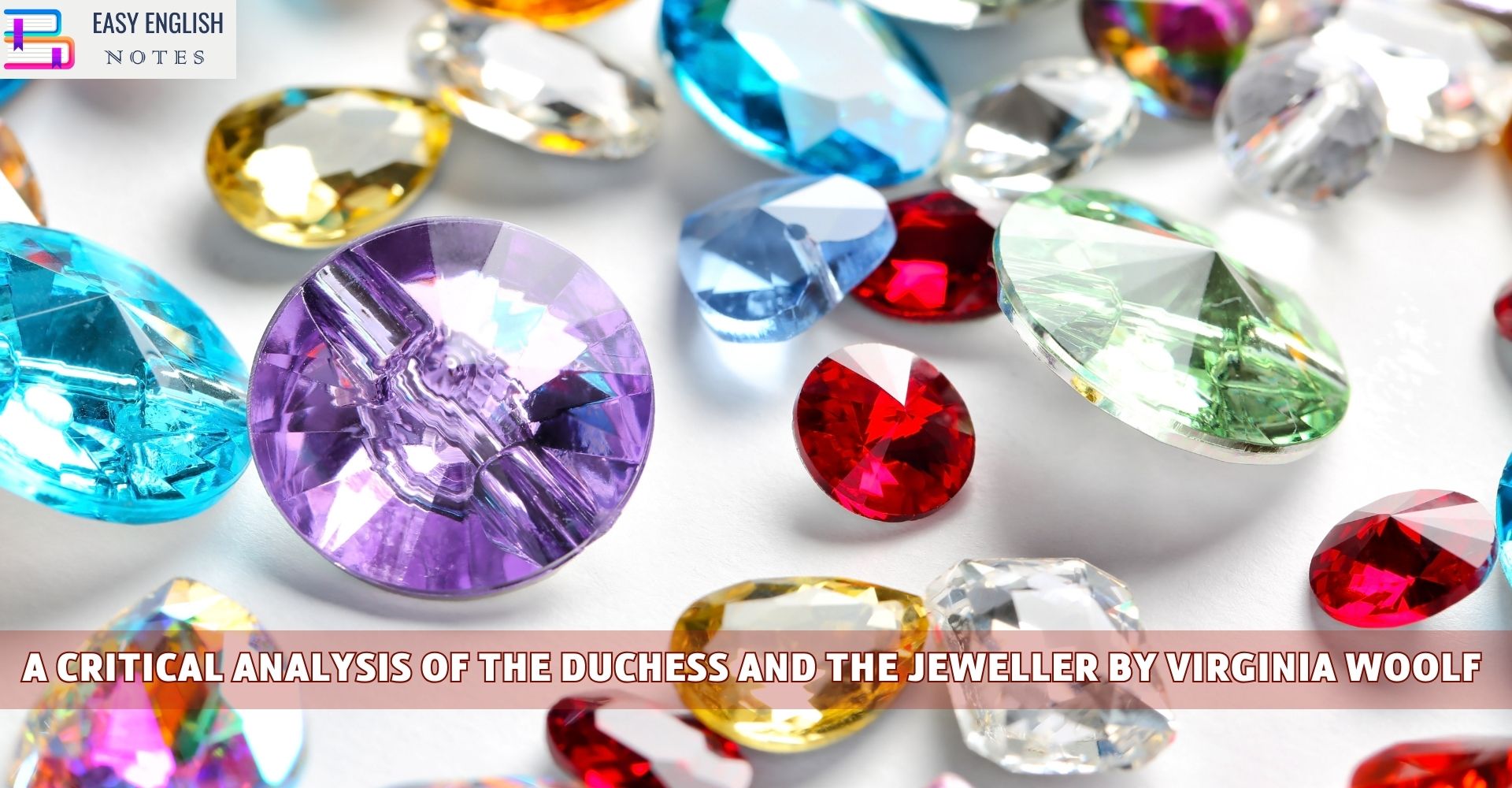‘The Duchess and the Jeweller’ is a representative modern short story written by Virginia Woolf. Virginia Woolf occupies a significant place in the realm of modern English fiction and short story writers. It was she who together with James, Joyce and Dorothy Richardson introduced a new technique known as “the stream of consciousness” in fiction. This technique. was invented from a new réalisation of the complex and fluid nature of human consciousness and the desire to utilise this realisation in the portrayal of character. Looked from one point of view, “the stream of consciousness technique is a means of escape from the tyranny of the time dimension.” The author shows states of mind being modified by associations and recollections deriving from the present situation but referring to a constantly shifting series of incidents in the past.
The story entitled THE DUCHESS AND THE JEWELLER is characteristic of Virginia Woolf. Here, we find the use of the same technique which is found in her novels. There are three methods of writing short story or fiction. In one form of fiction, the character emerges out of the chronological account of a chain of events and situations. The second method is to create character and to weave incidents around him. The third method is the blend of the two methods. In Hardy’s MAYOR OF CASTERBRIDGE, “there is no description of the character of Michael Henchard. His character emerges as the story proceeds through the account of what Michael does and the way in which he reacts to the doings of others. The second method of characterisation can be illustrated from Trollope’s BARCHESTER TOWERS. In this book, there is a complete formal account of the character of Dr. Prondie and his wife. But the most psychologically effective of the foregoing techniques of modern fiction is the blend of the two. The technique has been used in Jane Austen’s EMMA. These are traditional techniques of fiction or short story writing. But in the recent times, writers have become disappointed with these traditional techniques as a result of the increased speculation into the nature of states of consciousness. They have become interested in those aspects of consciousness which are essentially dynamic and are independent of the given moment.
THE DUCHESS AND THE JEWELLER begins with the description of introspection on the part of Oliver Vacon, the central character of this story. He is reading a paper by the fire of electric coal. In the meantime, he becomes conscious of his past life. We can examine the following lines:-
“Behold Oliver”, he would say addressing himself, “you who began life in a filthy little alley, you who……, and he would look down at his legs, so shapely in their perfect trousers, at his boots, at his spats. They were all shapely shining, cut from the best scissors in Savile Row.”
Also Read :
- Compare Hamlet with Macbeth, Othello and other Tragedies
- “The Pardoner’s Tale” is the finest tale of Chaucer
- Prologue to Canterbury Tales – (Short Ques & Ans)
- Confessional Poetry – Definition & meaning
- Line By Line Explanation Of The Poem The Eve of St. Agnes
Here, we see the full implementation of the conception of time. Mrs. Woolf thinks that time is fluid. Our present is guided by the past and our future is shaped by our present. It is for this reason Oliver Bacon remembers his past days of adversity in the present prosperity. Mrs. Woolf is primarily interested in the depiction of the atmosphere of the mind of her character and here she has been successful in doing so.
Previously, Oliver Bacon lived in a filthy house on a dirty street. But now he is living at the top of a house overlooking the Green Park. He has a flat in which chairs are arranged at the right angles. All the chairs are covered in hide and so far are covered in tapestry. The windows have the proper allowance of discreet net and figured stain. From the middle of the window, he is in a position to look down upon the glossy roofs of fashionable cars parked in the narrow streets of Piccadilly. At eight in the morning, he gets his breakfast brought in a tray by a man servant. Then he reads letters of invitation from duchesses, countess, viscountess and honourable lords. Thus, now Oliver Bacon is a completely changed man. He is one of the richest men of the city of London. All the time, he is engaged in ease and comfort, pomp and show.
But towards the end of the story, Bacon is again reduced to his former economic status because he is badly deceived by the Duchess of Lambourne. The Duchess sells rotten pearls to the jeweller which leads to his bankruptcy and insolvency. Thus, the story is rounded off because it ends where it began with the description of the poverty of Oliver Bacon and it ends with the depiction of his insolvency.
The story is remarkable because it gives us an insight into the literary art of Virginia Woolf. The presentation of the state of the mind of Oliver Bacon in different situations is masterly.
PLEASE HELP ME TO REACH 1000 SUBSCRIBER ON MY COOKING YT CHANNEL (CLICK HERE)











